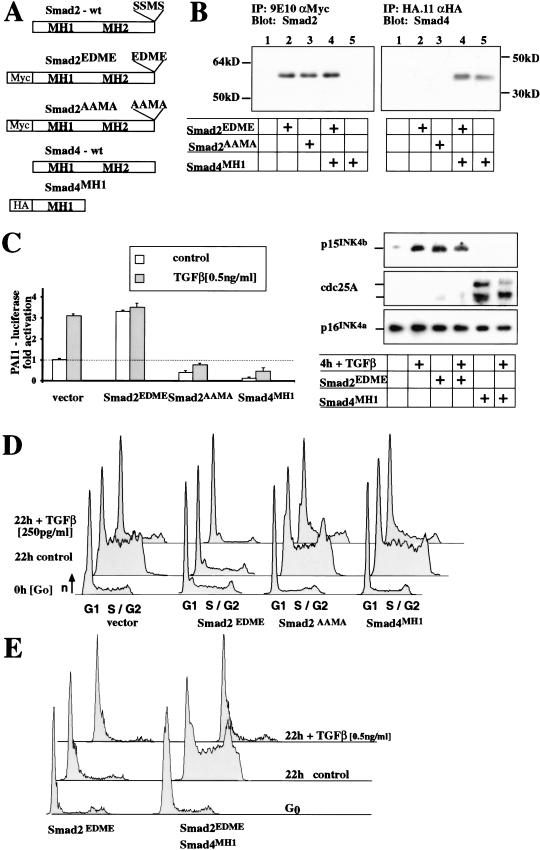Figure 1.
Smad proteins are sufficient and necessary for transcription but only sufficient and not necessary for G1 arrest induced by TGF-β. (A,B) Smad-induced transcription was modified in EpH4 mammary epithelial cells by expressing activated Smad2 (Smad2EDME) or dominant-negative Smad2 (Smad2AAMA) or the Mad Homology domain 1 of Smad4 (Smad4MH1) using high-titer retroviral vectors. (C) Transcription of transient TGF-β reporter normalized to β-actin control and Western blot for the endogenous p15 (TGF-β activated), cdc25A (TGF-β repressed), and p16 (control). (D) FACS-DNA profiles of EpH4 cells expressing the respective Smad protein. Cells were released from contact inhibition into cell cycle for 22 h, in the presence or absence of TGF-β. The activated Smad2EDME arrests cells in G1 under all conditions and activates transcription; dominant-negative Smad2AAMA or SMAD4MH1 were unable to prevent the TGF-β-induced G1 arrest in EpH4 cells despite their ability tototo antagonize TGF-β-induced transcriptional effects. (E) The expression of Smad4MH1 was sufficient to overcome Smad2EDME-mediated cell cycle arrest but not TGF-β-mediated arrest, arguing for an additional, not transcription-mediated, mechanism for induction of G1 arrest by TGF-β.

